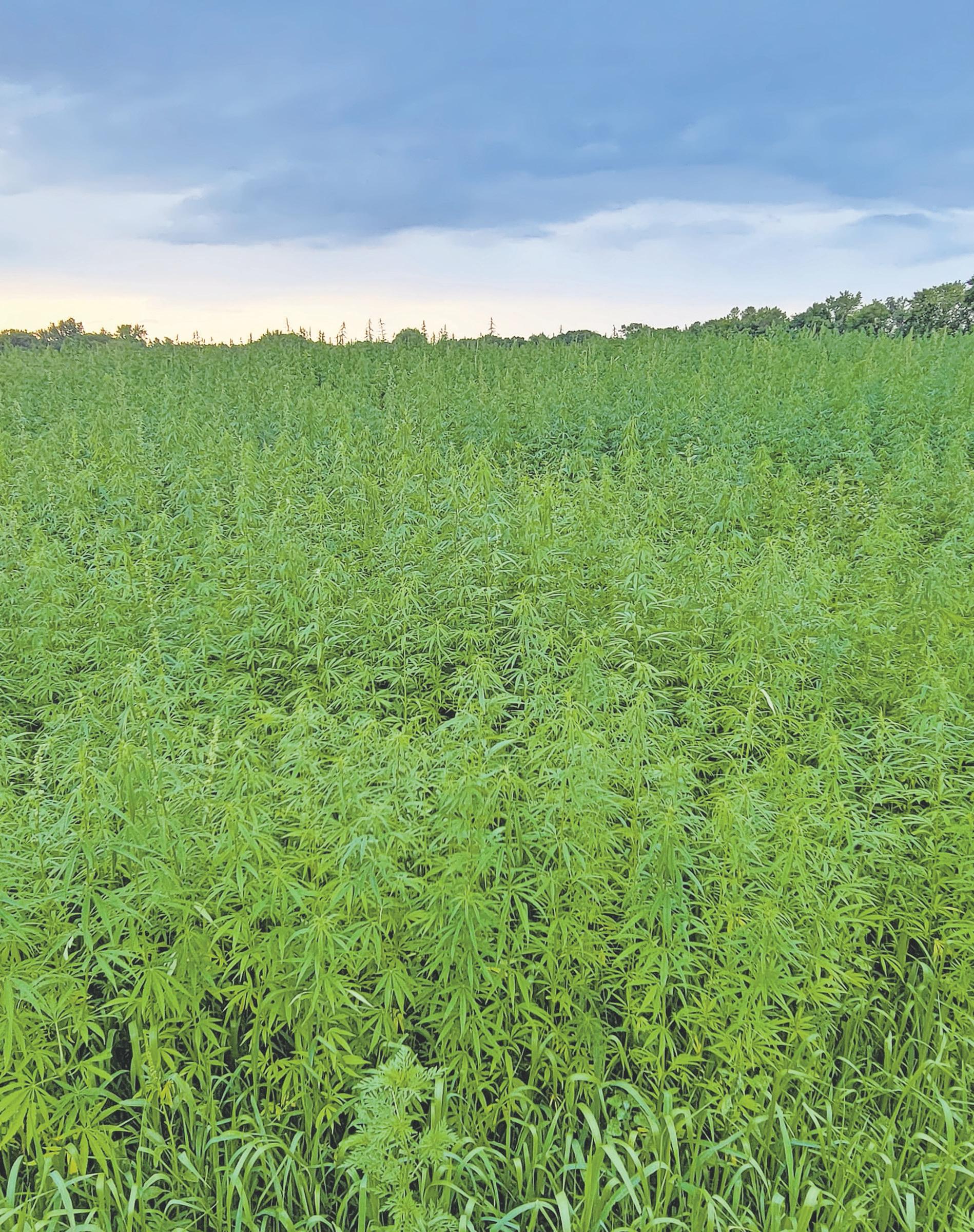
7 minute read
Home sweet hemp
Lower Sioux to build environmentally-friendly homes with hempcrete
By Shelby Lindrud | West Central Tribune
MORTON — There has been a buzz growing around hemp the last several years as loosening regulations in the United States have started to make it easier to grow, process and use the plant in a variety of products and projects. At the Lower Sioux Indian Community near Morton, the focus has been on using hemp as a building material, to help construct not only higher-quality but environmentally-friendly homes for members.
“There are 20,000 uses for the plant. I can’t think of a better one for our community members than to give them a home that will last forever,” said Earl Pendleton, Lower Sioux Tribal Council vice president.
Hempcrete and its benefits
For more than 12 years, Pendleton has been learning about a product call hempcrete, which can be used as a building material. The recipe is simple enough. It is just the woody core of the hemp plant stem called the hurd, lime and water. Mix it all together, and you have a compound that can either be formed into blocks or poured into forms around a wooden frame to create entire wall sections of a building.
“It is a simple product to build with,” Pendleton said.
It can replace the many layers of insulation materials in a home, while simultaneously creating a structure that is fire-, pest- and mold-resistant. It is a vapor-permeable product, meaning it can hold moisture and then allow it to evaporate. It has also been shown to be a better insulator than normal concrete and similar to conventional fibrous insulation.

The Lower Sioux Indian Community hopes to one day transform hundreds of acres of hemp into high-quality and environmentally-friendly homes. The hemp can be used for the creation of hempcrete, a building material a bit like concrete.
Contributed / Lower Sioux Indian Community
While it is not as strong as concrete, and usually can’t be used for load-bearing foundations or walls, hempcrete does get stronger as it ages and, in some cases, structures using hemp have lasted hundreds of years.
Hempcrete also has various environmental benefits. The hemp plant takes carbon out of the atmosphere, has been shown to be beneficial to the soil in which it is planted and, because it grows a canopy with its leaves, weed growth is greatly reduced as is the need for chemical weed control. It grows much faster than trees, is 100% recyclable and, if grown locally, it may not have the carbon footprint associated with transporting.
“Hempcrete is an environmentally safe, sustainable alternative,” Pendleton said.
Those people who live in hemp homes who have spoken with Pendleton said their families get ill less frequently and that the home seems to be healthier place to live.
“It feels different, it feels natural,” Pendleton said.
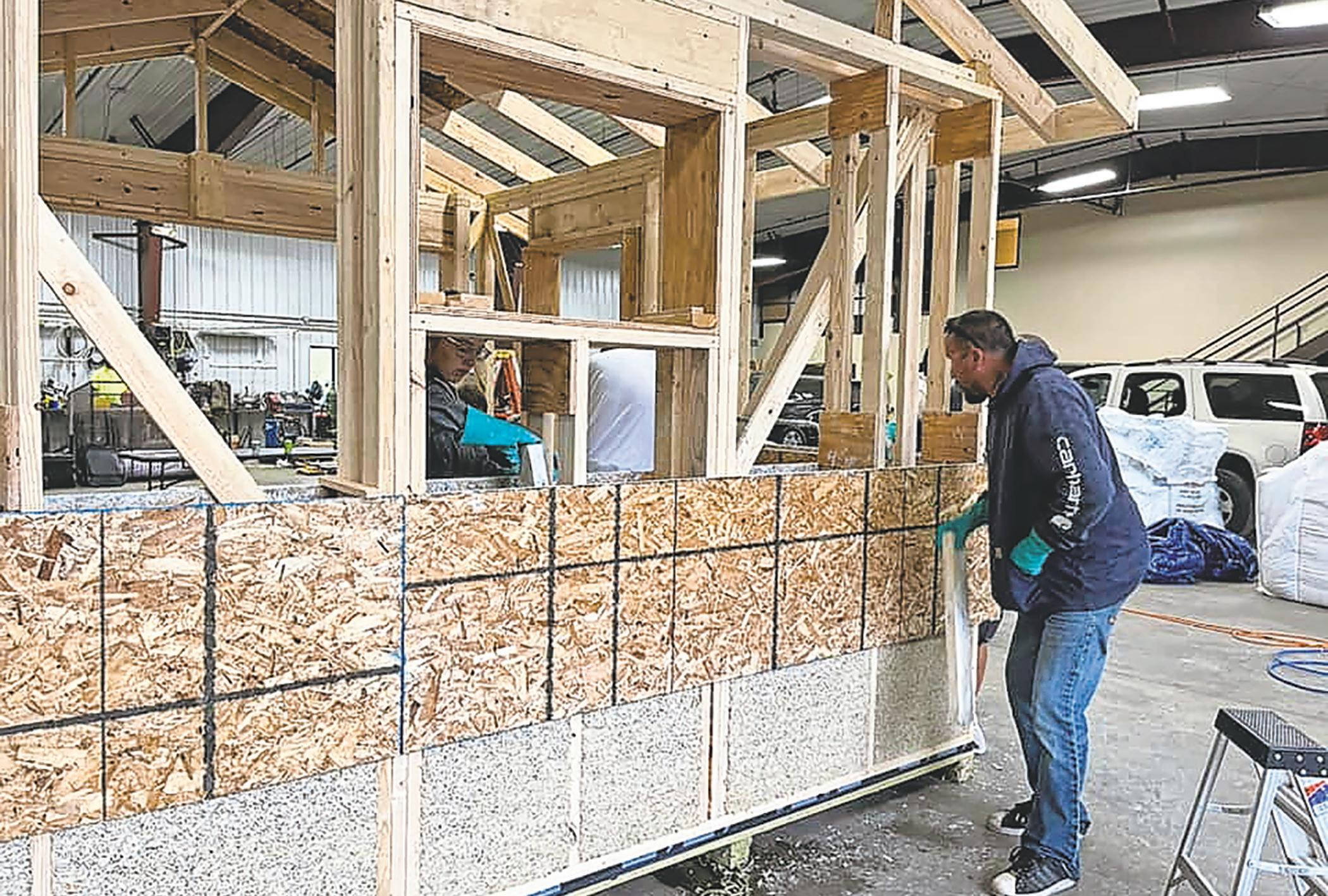
In September 2022, the Lower Sioux Indian Community constructed a shed using hempcrete. It was a practice project to show the community how hemp can be used as a building material.
Contributed / Lower Sioux Indian Community
The ‘weed’ problem
It has only been in the last few years that Pendleton and the Lower Sioux have really started to make progress in their plans for a completely tribe-driven hemp-building industry. It was only in 2018 that the United States even allowed for hemp to be grown for various commercial enterprises, such as food, clothes and building products.
“It has been a long process. Hemp is so hard to get going,” Pendleton said.
The No. 1 reason for all the red tape and hoops one has to go through to grow hemp is its relationship to another plant. Hemp is a variety of cannabis, just like marijuana, but hemp’s levels of the mood-altering component THC are much lower. To be considered hemp in the United States, the product must have THC levels less than 0.3% by dry weight. The hemp being grown and used by the Lower Sioux is even lower, at 0.001%, Pendleton said.
“It gets associated with its wild cousin marijuana all the time,” Pendleton said. “It has nothing to do with it, and I don’t want anything to do with it.”
Lower Sioux’s plan for hemp
It has taken some time for the tribal council and the community at large to get behind the hemp-building project, but now there is a lot of energy, support and excitement around it.
“The current council is really behind it,” Pendleton said.
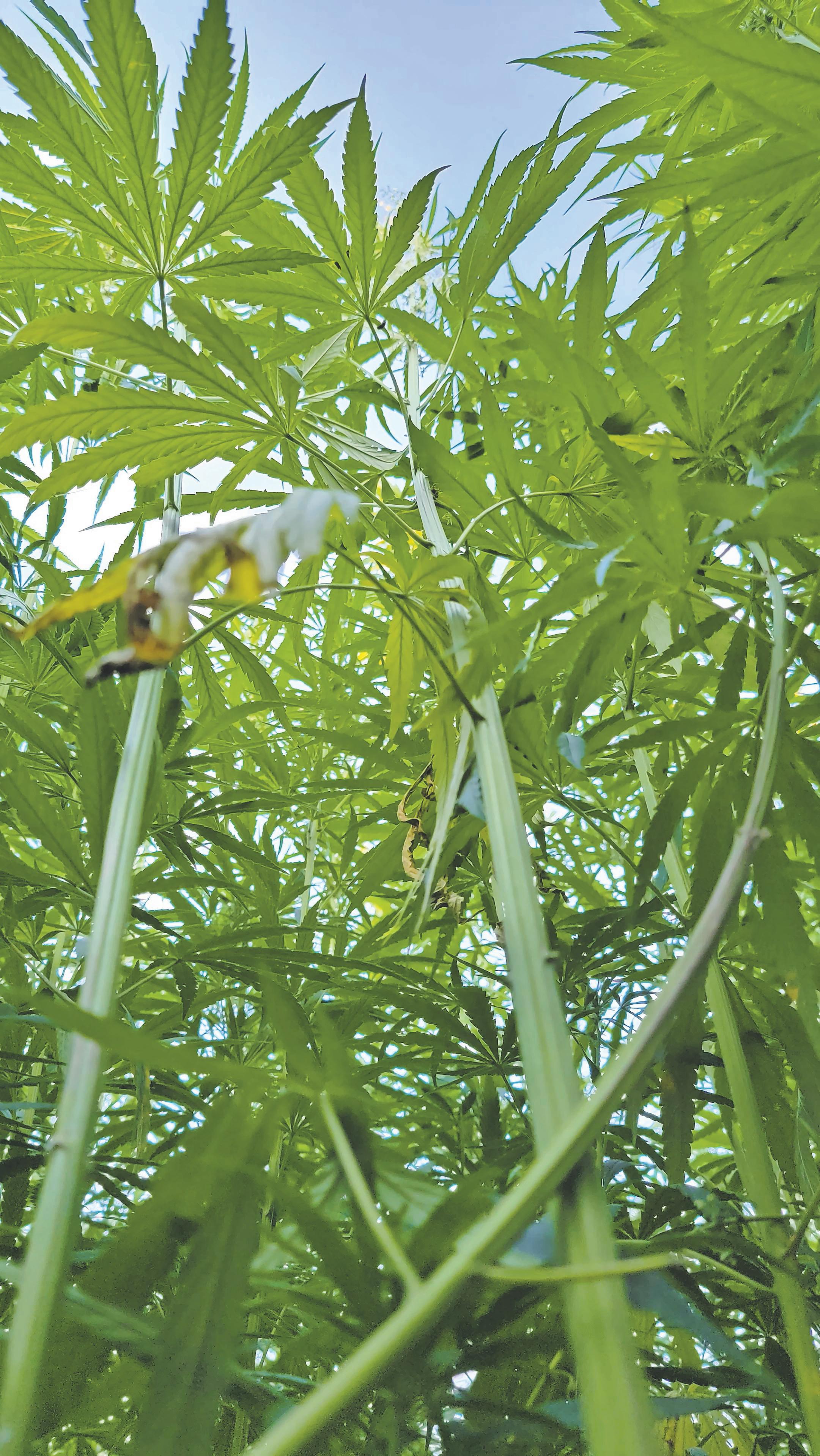
The canopy created by the leaves of the hemp plant help stamp down weed growth in the fields.
Contributed / Lower Sioux Indian Community
About three years ago, the tribe took back control of more than 300 acres of tillable farm land it had been leasing and now grows hemp on those acres. Pendleton said they are looking for more farmers interested in growing hemp.
“We had to start a farming program, which we’ve never done in 80 years of existence,” Pendleton said, due to the opportunities hemp has brought for those wanting to get into farming.
A $1.5 million grant from the Minnesota Department of Employment and Economic Development allowed the Lower Sioux to purchase the processing equipment it needed to separate the hurd from the rest of the hemp plant. With this equipment, the tribe can process about a ton of hemp an hour, or around 2,000 acres worth of hemp a year. It takes about 3 acres worth of hemp to build a 1,200-square-foot home.
Currently, the equipment is being stored in Olivia, but this spring the tribe will start construction on a 20,000-square-foot hemp campus, where the hemp processing will take place. The tribe might also one day produce hempcrete blocks which could then be sold and used in building projects across the region.
Also this spring, the tribe will start construction on a hempcrete test home pilot program. The 1,400-square-foot home will have four bedrooms and be outfitted with testing equipment. This will allow the project team to see how the hempcrete reacts to Minnesota’s temperamental climate and see if the benefits of hempcrete can be proven. The Lower Sioux obtained another grant, this one from Housing and Urban Development, to help fund the pilot program
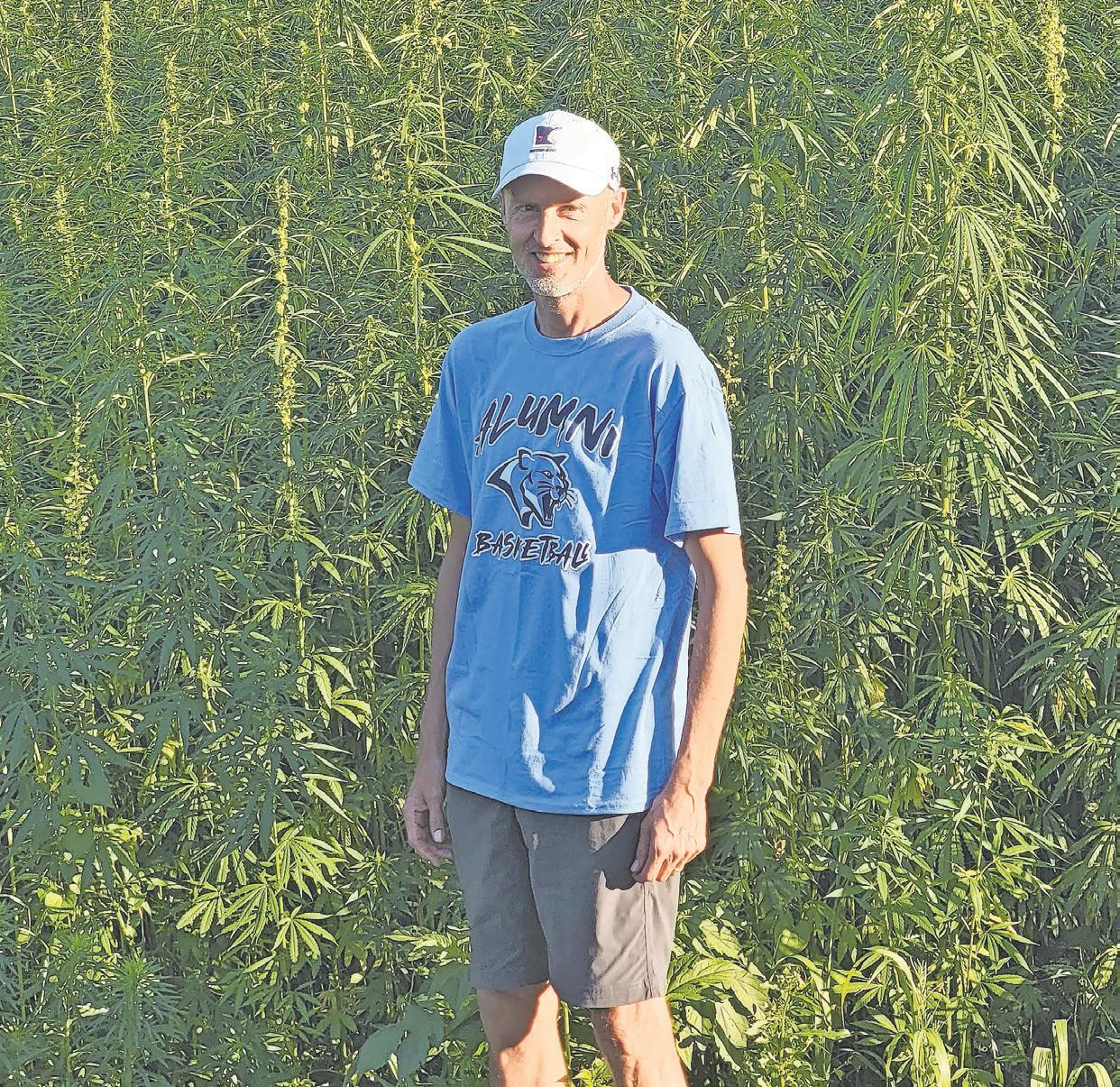
Earl Pendleton, vice president of the Lower Sioux Indian Community Tribal Council, has been researching hempcrete as a building material for 12 years. All the research is starting to pay off as the community begins creating its own hempcrete industry.
Contributed / Lower Sioux Indian Community
Once all the pieces are in place, the Lower Sioux will have a seed-towall hemp-building industry right on tribal land.
Pendleton envisions the industry providing job opportunities for members, from farming to processing to construction.
“They could really fill themselves up[ with a job like this," Pendleton said.
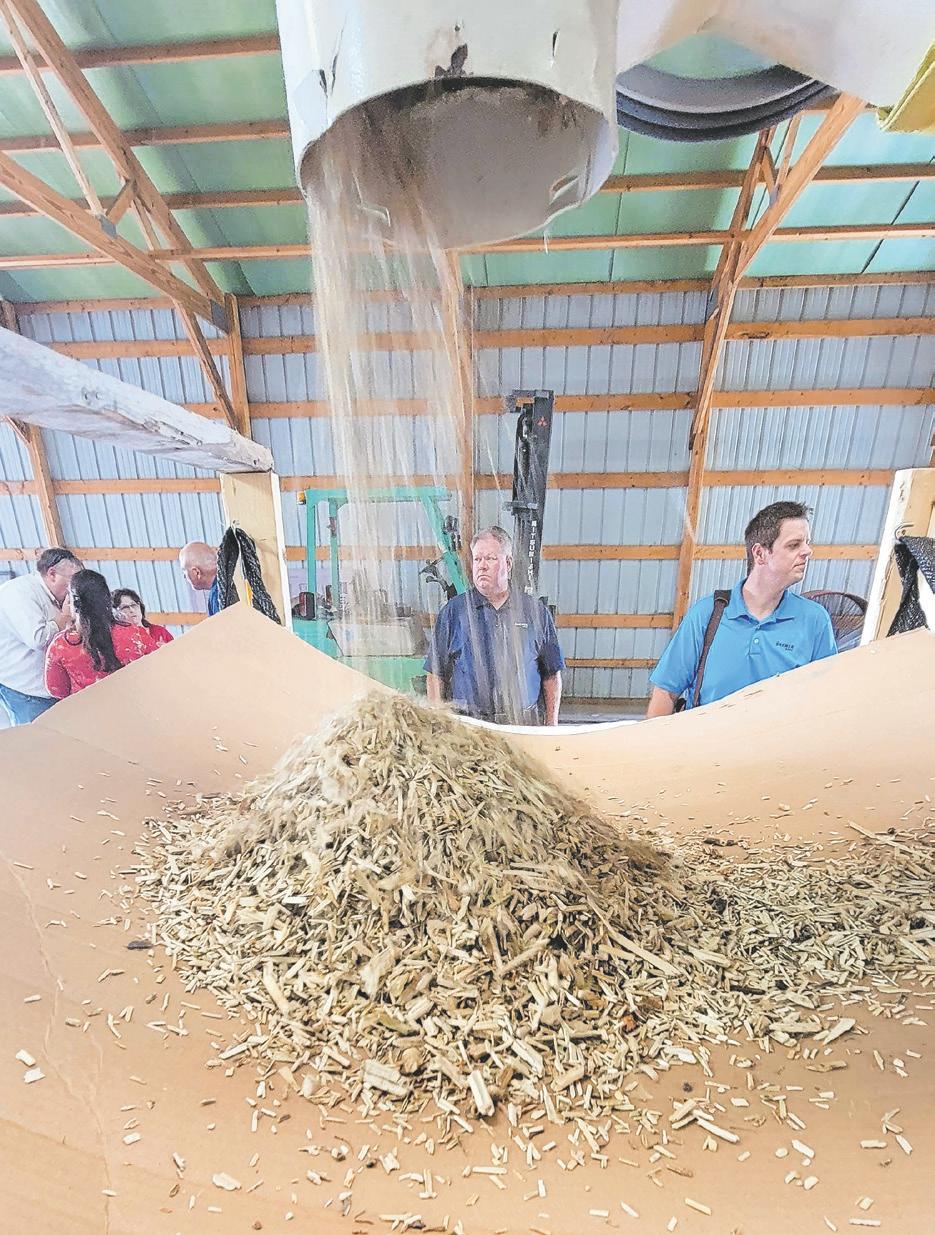
To create hempcrete you need to separate the hurd, or woody inner core of the stem, from the rest of the plant. Pendleton said the remaining fiber and seeds from the plant could be sold to other businesses.
Contributed / Lower Sioux Indian Community
The main goal is to one day build a housing development at the Lower Sioux full of high-quality hempcrete homes that not only last but are healthier and environmentally friendly. Just like so many communities across the state and country, the Lower Sioux is struggling with a housing shortage. But the tribe also wants to do what is best for the environment. According to the 2019 Global Status Report for Buildings and Construction, 40% of energy-related greenhouse gas emissions come from building and construction.
“We need more (houses), but we also need better — the planet needs better,” Pendleton said. “There is a huge opportunity here I think.”
Pendleton said it make sense that a Native American tribe would be one to create a locallysourced hemp construction business. It can be seen as a modern equivalent of when the current members’ ancestors were living on and with the land.
“We have been historical caretakers of the land,” Pendleton said. “Here we are, trying to use a plant for all its worth and eliminate the problems with current products.”
With all the attention being put on climate change, sustainability, jobs and housing needs, Pendleton feels the time is right for hempcrete.
“It has become the perfect storm for hemp to take a foothold in the construction industry,” Pendleton said.
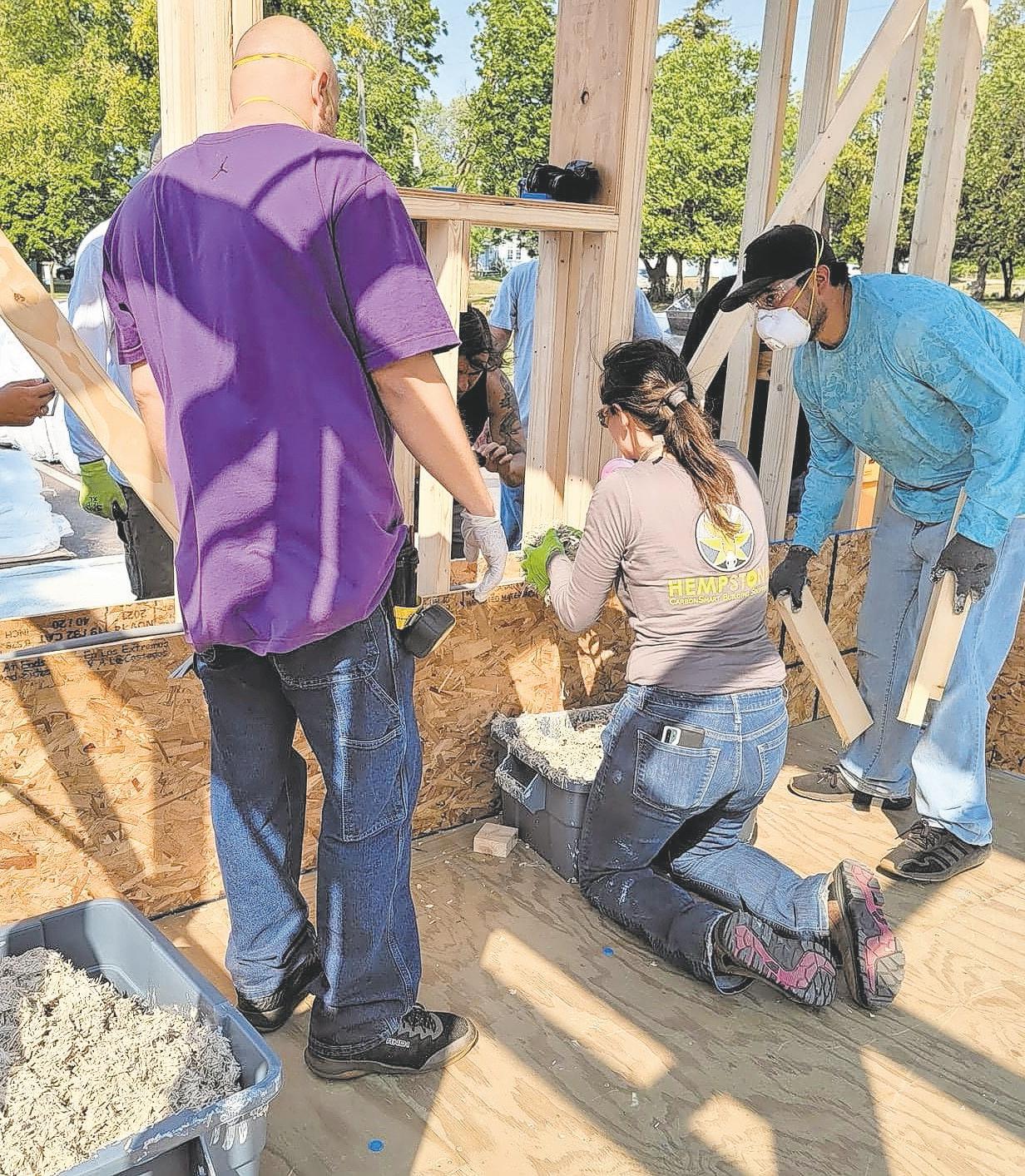
Once mixed, the hempcrete mixture is placed in a form that surrounds the wood frame of the building. The hempcrete then cures into a solid structure and the form can be removed.
Contributed / Lower Sioux Indian Community










